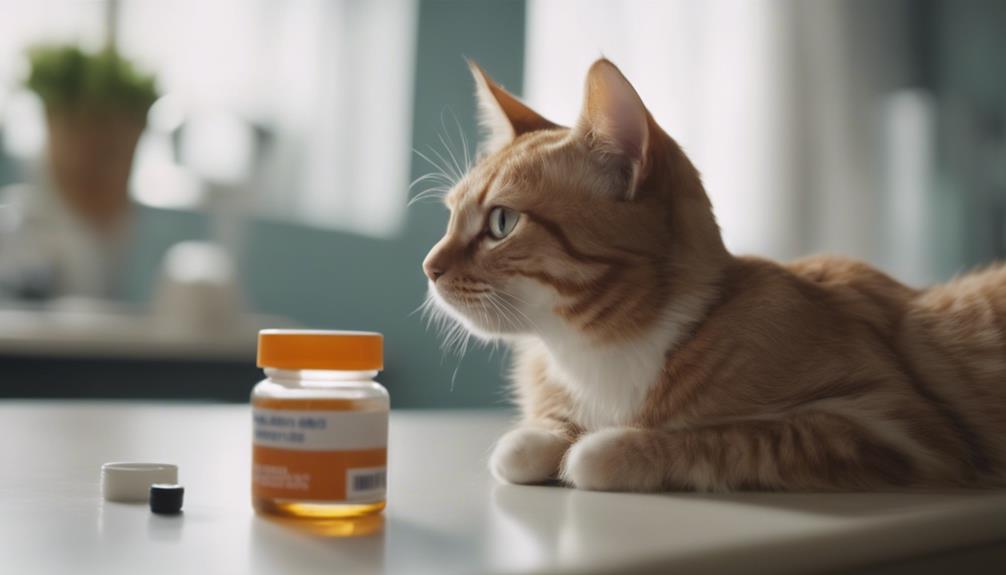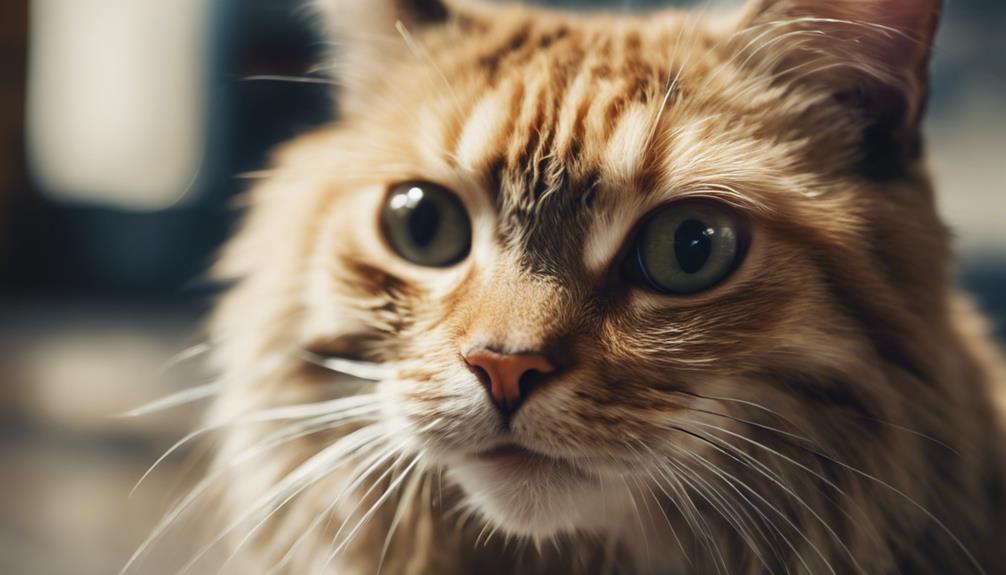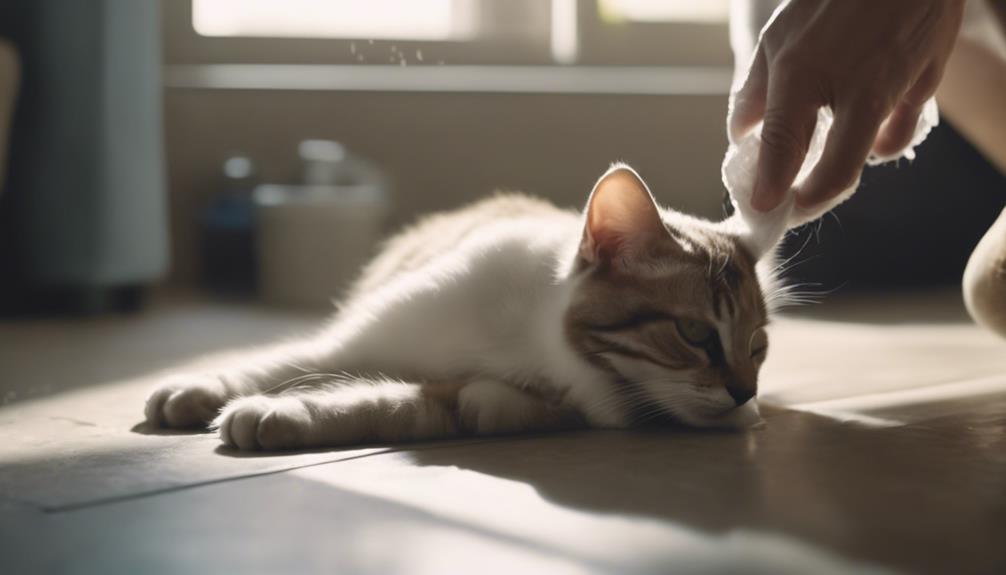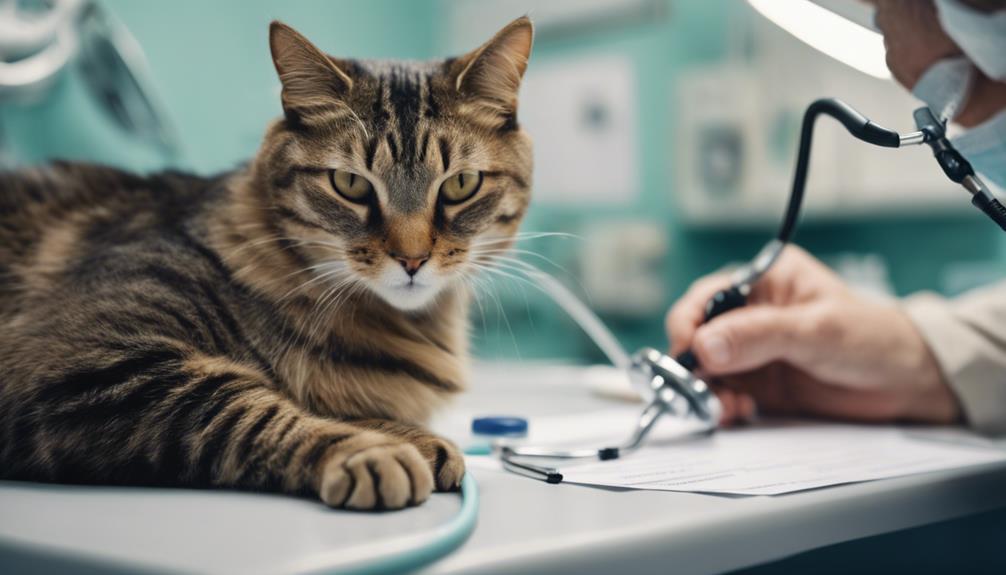Cat incontinence is a delicate issue that requires careful attention and specialized care to ensure your feline companion's well-being. From understanding the root causes to implementing tailored treatment plans, there are various strategies to improve your cat's quality of life.
By addressing this condition proactively and making necessary adjustments, you can create a supportive environment that enhances your kitty's comfort and happiness.
Stay tuned to discover practical tips and effective solutions that will help you navigate the complexities of caring for an incontinent cat and ultimately make a positive difference in your pet's life.
Key Takeaways
- Learn to express bladder/colon properly, maintain hygiene, monitor closely, and provide a cozy environment for your incontinent cat.
- Modify home for accessibility, implement regular bathing, use washable materials, and ensure a comfortable setting for your cat.
- Work with vet for tailored treatment, consider medications/surgery, manage behavioral issues, and prioritize your cat's well-being.
- Focus on hygiene with regular cleaning, use cat-safe products, prevent accidents, and ensure regular veterinary check-ups for your cat's health.
Causes of Cat Incontinence
Cat incontinence can stem from various underlying health issues in cats, including feline leukemia, spinal damage, senility, renal disease, and Manx syndrome.
Feline leukemia, a viral infection, can weaken the immune system, leading to bladder control problems. Spinal damage or trauma may affect nerve signals that control urination and defecation. Senility in older cats can cause cognitive dysfunction, resulting in accidents around the house. Renal disease often leads to increased urine output and accidents due to decreased bladder control. Manx syndrome, a genetic condition in tailless or short-tailed cats, can impact the spinal cord, affecting nerve function in the bladder and bowels.
Understanding these causes is crucial for effective management and treatment of cat incontinence.
Incontinent Cat Care Tips
When caring for a cat experiencing incontinence, it is essential to establish a routine for expressing the bladder or colon to ensure their comfort and well-being. Here are some tips to help you care for your incontinent cat effectively:
- Learn the proper technique: Consult your vet to learn how to express your cat's bladder or colon correctly.
- Maintain a clean environment: Regularly clean up accidents to prevent infections and keep your cat comfortable.
- Monitor closely: Keep an eye on your cat's condition, behavior, and any changes that may indicate a need for medical attention.
- Provide comfort: Ensure your cat has a cozy and safe space to rest and relax in.
Treatment Options for Incontinent Cats

Implementing a comprehensive treatment plan is crucial for effectively managing incontinence in cats. Treatment options for incontinent cats may include medications such as phenylpropanolamine to strengthen the urethral sphincter, hormone therapy to address estrogen-responsive incontinence, or antibiotics for urinary tract infections. In some cases, surgical interventions like urethral bulking agents or artificial urethral sphincters may be considered.
Dietary modifications, such as increasing water intake or feeding a specialized diet, can also help manage incontinence. It is essential to work closely with a veterinarian to determine the underlying cause of the incontinence and tailor the treatment plan to the individual cat's needs. Regular follow-up appointments and adjustments to the treatment plan may be necessary to ensure the best outcome for the cat's health and well-being.
Comfortable Home Modifications
To enhance the living environment for an incontinent feline companion, consider making adjustments to create a more comfortable home setting. Here are four key modifications you can make to ensure your cat's well-being:
- Increase number of litter boxes: Provide multiple litter boxes in easily accessible locations to accommodate your cat's needs.
- Regular bathing routine: Implement a consistent bathing schedule to keep your cat clean and prevent skin irritation.
- Easy-to-clean home setup: Opt for surfaces and materials that are simple to clean to manage accidents effectively.
- Use washable cat beds and blankets: Choose bedding that can be easily washed to maintain cleanliness and comfort for your cat.
Recognizing Signs of Cat Incontinence

Recognizing signs of cat incontinence is imperative for pet owners to promptly address potential health issues and provide appropriate care for their feline companions. Cats may exhibit various symptoms indicating incontinence, such as involuntary urination or leaking, involuntary defecation or loss of bowel control, behavioral issues like separation anxiety, presence of kidney disease, UTI, or diabetes, and physical signs like peeing while sleeping or walking. To help you identify these signs more effectively, below is a table summarizing common indicators of cat incontinence:
| Signs of Cat Incontinence | Description |
|---|---|
| Involuntary urination | Unintentional release of urine |
| Involuntary defecation | Accidental bowel movements |
| Behavioral issues | Anxiety-related behaviors |
Managing Behavioral Issues
Addressing behavioral issues in incontinent cats is essential for ensuring their well-being and comfort at home. Behavioral challenges can arise due to the stress and frustration associated with their condition. Here are four key strategies to help manage behavioral issues in incontinent cats:
- Establish a Routine: Cats thrive on consistency, so creating a predictable daily routine can help reduce anxiety and improve their sense of security.
- Provide Enrichment: Engage your cat in interactive play, puzzle feeders, and vertical spaces to keep them mentally stimulated and physically active.
- Offer Comforting Spaces: Set up cozy hiding spots and comfortable resting areas where your cat can retreat to when feeling overwhelmed.
- Consider Behavior Modification Techniques: Consult with a veterinarian or animal behaviorist to explore behavior modification strategies tailored to your cat's specific needs.
Cleaning and Hygiene Practices

Maintaining cleanliness and implementing proper hygiene practices are essential aspects of caring for an incontinent cat. Regular cleaning not only helps keep your cat comfortable but also prevents potential infections and skin irritations. Here are some cleaning and hygiene practices to consider:
| Practice | Description | Benefits |
|---|---|---|
| Regular Bathing | Clean your cat's fur and skin regularly | Reduces odor and keeps skin healthy |
| Use Cat-Safe Cleaners | Choose cleaners safe for cats | Prevents toxic exposure |
| Washable Bedding | Use washable cat beds and blankets | Maintains cleanliness and comfort |
| Employ Cat Pee Pads | Place pads on furniture for easy cleanup | Protects furniture from accidents |
| Maintain Litter Boxes Clean | Regularly clean and change litter boxes | Encourages proper elimination habits |
Preventing Accidents at Home
To ensure a comfortable and hygienic environment for your incontinent cat, implementing preventive measures to minimize accidents at home is paramount.
- Increase Litter Box Accessibility: Place litter boxes in easily accessible areas to encourage proper bathroom habits.
- Establish a Regular Feeding Schedule: Consistent feeding times can help regulate your cat's bowel movements.
- Utilize Cat Pee Pads: Protect furniture and floors by using cat pee pads in areas where accidents are more likely to occur.
- Provide Adequate Supervision: Keep an eye on your cat's behavior and provide timely assistance to prevent accidents before they happen.
Ensuring Regular Veterinary Check-ups

Regular veterinary check-ups are essential for monitoring the health and well-being of your incontinent cat. These check-ups are crucial in detecting any underlying medical conditions that may be contributing to your cat's incontinence, such as feline leukemia, renal disease, or spinal damage.
During these visits, your veterinarian can assess your cat's overall health, provide guidance on managing incontinence, and adjust treatment plans as needed. Regular check-ups also allow for early intervention if new issues arise, ensuring that your cat receives the best possible care.
Promoting Cat's Well-being
For enhancing your incontinent cat's overall quality of life and comfort, prioritizing measures that promote their well-being is crucial. Here are four essential ways to promote your cat's well-being:
- Provide a Comfortable Environment: Ensure your cat has a cozy bed, access to clean litter boxes, and a quiet space to retreat to.
- Maintain a Healthy Diet: Feed your cat a balanced diet recommended by your veterinarian to support their overall health and manage any underlying conditions.
- Encourage Mental Stimulation: Engage your cat with interactive toys, scratching posts, and play sessions to keep them mentally active and happy.
- Show Affection and Attention: Spend quality time with your cat, offering cuddles, grooming, and positive reinforcement to strengthen your bond and boost their well-being.
Frequently Asked Questions
Can Incontinence in Cats Be a Sign of a More Serious Underlying Medical Condition?
Incontinence in cats can indeed signal a serious underlying medical issue. Causes such as feline leukemia, spinal damage, senility, renal disease, or Manx syndrome require veterinary evaluation. Early detection and treatment are crucial for proper care.
Are There Any Specific Breeds of Cats That Are More Prone to Developing Incontinence?
Certain breeds, such as Siamese, Burmese, and Manx cats, are more predisposed to developing incontinence due to genetic factors. It is essential for cat owners of these breeds to stay vigilant and seek veterinary advice for early detection and management.
How Can a Cat Owner Differentiate Between Normal Aging-Related Issues and Signs of Incontinence in Their Cat?
Differentiating between normal aging issues and signs of incontinence in cats involves observing for behavioral changes, increased accidents, or medical conditions. Consulting a vet for thorough evaluation is crucial in determining the underlying cause and appropriate management strategies.
Are There Any Alternative Therapies or Holistic Approaches That Can Help Manage Cat Incontinence?
Alternative therapies or holistic approaches for managing cat incontinence may include acupuncture, herbal remedies, physical therapy, and dietary modifications. Consult with a veterinarian experienced in integrative medicine to explore these options alongside conventional treatments for best results.
How Can a Cat Owner Help Their Incontinent Cat Maintain a Good Quality of Life and Overall Well-Being?
To help an incontinent cat maintain a good quality of life and overall well-being, cat owners should focus on creating a comfortable and supportive environment, providing appropriate care and treatment, and monitoring their cat's condition regularly to address any changes effectively.
Will Using Household Cleaners Affect My Cat’s Incontinence Care?
When it comes to keeping your cat safe while dealing with incontinence, it’s important to consider the impact of household cleaners. Some cleaners can be toxic to cats, so be sure to use pet-safe products when cleaning up accidents. Regularly cleaning and maintaining a clean litter box area is also crucial for your cat’s incontinence care.
Conclusion
In conclusion, managing cat incontinence requires:
- Understanding the underlying causes
- Providing appropriate care and treatment
- Creating a comfortable home environment
- Recognizing signs of incontinence
- Ensuring regular veterinary check-ups
By addressing these aspects proactively, caregivers can improve the quality of life for their incontinent feline companions. This ensures they receive the care and support needed to lead a comfortable and fulfilling life.




